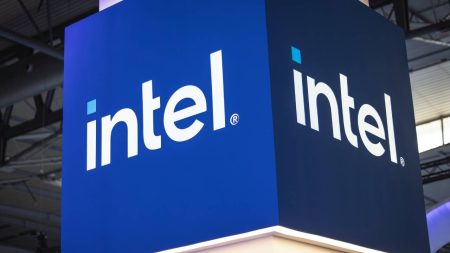The appeal of the best dividend mutual funds should be clear: They offer a sizable dividend today, and they can grow in the future, helping investors win both ways. Plus, they offer other benefits, including lower risk through diversification. So the best dividend mutual funds are an attractive prospect for any investor, but especially for retirees, who need current income today but also growth for tomorrow, so that they don’t outlive their assets.
Here are the best dividend mutual funds and what you need to watch out for as you invest. (Here are the best dividend ETFs, if you’re looking for an exchange-traded fund.)
5 things to watch in a dividend mutual fund
It’s important to pay attention to a number of factors when you’re selecting a dividend mutual fund, and while the size of the dividend is important, it’s not the only criterion you should use.
- Dividend yield: While it might be tempting to screen the mutual fund universe for the highest yields and just pick those, you’re likely to wind up in trouble if you go this route. The highest yields are likely to evaporate, often because the fund’s investment strategy won’t be in favor over a longer period. A high-yield can then be a bad sign.
- Dividend growth rate: Closely related to the yield, the fund’s dividend growth rate will show you how fast that payout has risen over time. Generally, the higher, the better. But there’s usually a trade-off between the size of the dividend and how fast it grows. That is, a lower-yielding fund may often grow its dividend faster than a higher-yielding fund.
- Long-term returns: A fund’s long-term returns – five- and 10-year numbers – are the best gauge to the sustainability of its strategy. Look for an average annual return that far outpaces the dividend yield. Otherwise, you’re sacrificing a lot of potential growth for income today. Or worse, your investment is losing money so you can get the dividend.
- Expense ratio: The fund’s expense ratio is how much you’ll pay to own it each year as a percentage of your total investment. You’ll pay this fee whether you’re making money in the fund or not, and so it’s better to minimize it, especially since you can find attractive dividend mutual funds without paying a high expense ratio. An expense ratio over 0.5 percent – a cost of $50 per $10,000 invested – is the pivot point from reasonably priced.
- Holdings: Look at the fund’s holdings to see what kind of stocks it owns: high-quality blue chip stocks or unknown companies in an industry with suspiciously high yields? While diversification can protect you from company-specific risks, it won’t protect you if the fund owns only stocks from a dubious industrial sector.
These factors can help steer you away from dividend funds that have an unsustainably high yield today and without a solid long-term track record. Then you let your dividends roll in and use them to fund your lifestyle – a great passive investment – or reinvest them for more gains.
Top dividend mutual funds
Below are some of the top dividend mutual funds with attractive long-term returns, growing payouts, reasonable expenses and no sales load. (Data from Morningstar as of Oct. 1, 2024.)
Vanguard Dividend Appreciation Index Admiral Shares (VDADX)
This index fund tracks the S&P U.S. Dividend Growers Index, a collection of primarily large-cap growth stocks and value stocks that have the ability to raise their dividends over time.
- Dividend yield: 1.7%
- 5-year return (annualized): 12.9%
- Expense ratio: 0.08%
T. Rowe Price Dividend Growth Fund (PRDGX)
This actively managed fund looks for companies with sustainable above-trend growth in sales and earnings that could allow them to raise their dividends in the future. The fund’s holdings are mostly in large-cap and mid-cap stocks.
- Dividend yield: 1.0%
- 5-year return (annualized): 13.0%
- Expense ratio: 0.64%
Vanguard Dividend Growth Investor Shares (VDIGX)
This fund invests in high-quality companies that can deliver strong total returns over time due to strong earnings growth and their ability to grow their dividends. Holdings typically include large-cap stocks, and the fund targets a diversified weighting across industries.
- Dividend yield: 1.6%
- 5-year return (annualized): 11.7%
- Expense ratio: 0.29%
Vanguard High Dividend Yield Index Admiral Shares (VHYAX)
This passively managed fund tracks the FTSE High Dividend Yield Index, which includes companies that pay above-average dividends. The fund invests primarily in large-cap value stocks.
- Dividend yield: 2.8%
- 5-year return (annualized): 11.3%
- Expense ratio: 0.08%
Vanguard Equity-Income Investor Shares (VEIPX)
This actively managed fund invests in undervalued stocks that pay above-average dividends, and its holdings include mid-cap and large-cap value stocks. This fund is also available with a lower expense ratio (but a much higher minimum investment) in the Admiral Shares class under the symbol VEIRX.
- Dividend yield: 2.7%
- 5-year return (annualized): 11.7%
- Expense ratio: 0.27%
Bottom line
Dividends are a key source for investors’ returns over time. Combine them with a rising fund price, and you have a powerful combo that can build wealth for decades with lower risk.
Editorial Disclaimer: All investors are advised to conduct their own independent research into investment strategies before making an investment decision. In addition, investors are advised that past investment product performance is no guarantee of future price appreciation.
Read the full article here









